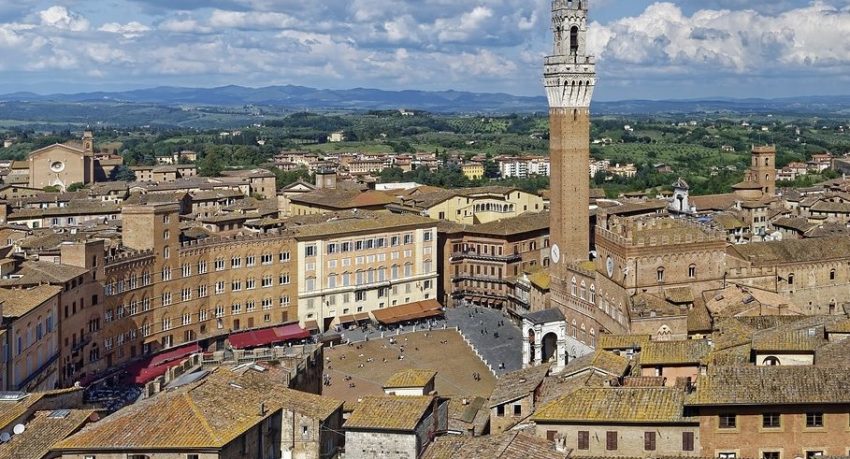Siena, considered one of the most ancient cities in Italy, lies in the heart of Tuscany’s Val D’Orcia. The city was important in history as a commercial and banking city until surpassed by Florence in the 13th–14th century. The city suffered from wars and famines and from the general economic decline that afflicted Italy in the early 14th century, and it was also devastated by outbreaks of the Black Death, which began in 1348. Struggles for power between factions of nobles, merchants, and the people failed to give Siena internal stability. Because Siena’s building activity was largely suspended in the 16th century, and because most modern building has taken place outside the city walls, Siena’s original character remains unspoiled, and Siena remains essentially a medieval town. The walls and gates enclose a city centre that is composed of narrow, winding streets and old buildings and palaces. The centre of the city is dominated by a large, shell-shaped square called the Piazza del Campo, which is the focus of Siena’s civic life. Tourists come to Siena in large numbers to view the Corsa del Palio, the famous horse races of medieval origin that are held twice annually on the Piazza del Campo amid colourful festivities. Siena was fortunate in escaping damage during World War II, and it now survives as a provincial town of great beauty and charm.

